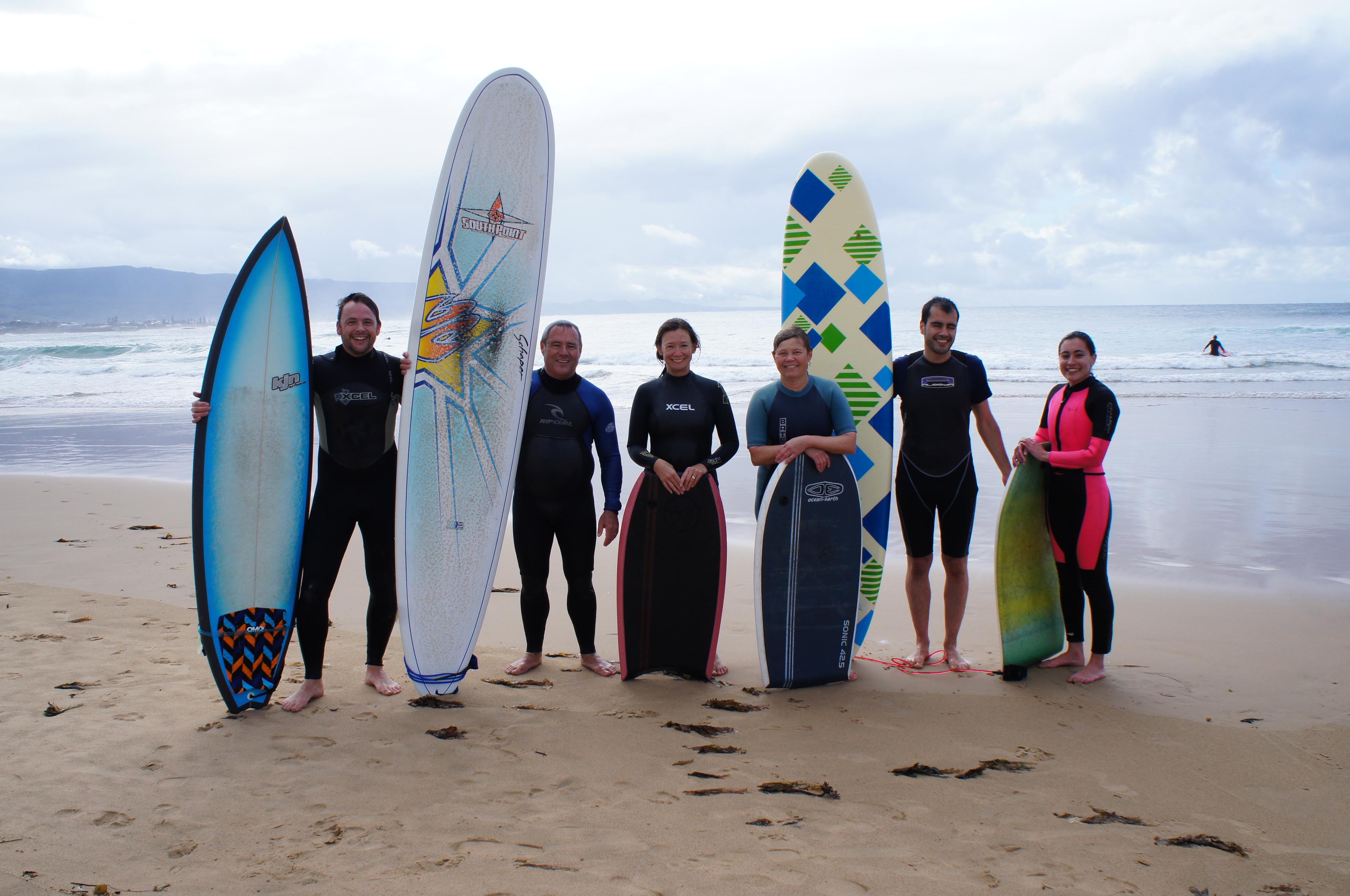It’s been a little over two months since we crossed into Australian waters and it’s been an amazing experience – both personally and academically. My husband and I have been literally testing the Australian waters up and down the eastern coast and can report that although the wintery water has been cold, there are wonderful experiences to be had. We swam with turtles and fish at the Great Barrier Reef, enjoyed swimming in rock pools in Sydney and Wollongong and, of course, did lots and lots of surfing. Here’s a picture of my surfing colleagues – that is, my colleagues at the University of Wollongong who surf:
However the goal of this trip was to connect with Australian academics and teachers in order to support my research in the area of social media use in teaching and learning. Although I didn’t get any papers written (always the preoccupation of an academic) I think that the experiences that I have had will enrich my research in this area in ways that are not necessarily obvious right now. Below are a few of the things that I did and what I think I learned from doing them:
- I gave a seminar at the University of Wollongong entitled Exploring the use of Social Media in Science Teaching and Learning. There are some researchers at the University who have done important work in the area of technology and education. So I made sure to do a lot of reading so that I was well grounded in the background literature. I think that particularly in the area of theory I did some reading that has really furthered my argument for employing complexity thinking in the area of social media and science education. The pdf of the powerpoint is here [IERI Presentation]. The next step is to incorporate these ideas into the paper I am working on from my first data set.
- Wendy Nielsen, Garry Hoban and I submitted an ethics application in order to conduct a small validation study for the social media use survey that I designed. To submit the application the three of us had some really good meetings and conversations about the survey and how it fits into our mutual research interests. We also worked on the survey and it is much better than it was before. The structure, content and wording have all been improved. Although we haven’t had time to actually collect the data yet, the ground work has been laid in order to validate the survey and move forward with Phase 2 of my SSHRC funded research project. We are also working on a University of Wollongong Faculty Research Grant to support the validation study. Thus being here and having the ability to work closely with Wendy and Garry has helped move my research project forward, particularly in the design and implementation of Phase 2.
- I visited two high schools and three elementary Australian schools. I’ve only blogged about one visit so far – but the lasting impression I have of visiting schools is that it is a very rich experience for thinking about one’s research, even if you’re not collecting data. While sitting in a classroom and talking to practising teachers, so many research questions came to mind. I feel like it’s kind of like when you are doing your PhD – every time you take a class you want to take your research in a new direction. Visiting schools for an educational researcher is similar. I want to know about the impact of the one-to-one laptop program on students when they enter university, if there is a difference in the kind of learning that happens when students copy notes by hand, or type them, or why older students think they don’t learn from computer based activities. There are so many questions and so little time. My school visits also helped put into perspective many of the claims published in large scale studies. It has been an excellent learning opportunity and I hope to spend more time in schools at home, connecting with teachers who are using technology, in order to know in which directions to focus my research efforts.
- Wendy and I conducted a Facebook experiment with the science methods class that she is teaching. See this post for an update. However, what I wanted to say here is that doing this with Wendy has inspired me to try something similar with my class that is starting next week. I think I’ll also do a personal inquiry on it – and share the results with my Year 6 students who are also participating in professional inquiry projects.
- One last thing that has been one of the goals of my visit has been to become more familiar with Garry Hoban and Wendy Nielsen’s research agenda around Slowmation pedagogy. I’ve attended their lectures and participated with the students to create slowmations and have seen the impact that creating a ‘slow – animation’ has on student understanding of science. Unfortunately I’m not here for the entire term of the course to see what the students create. But I’ve really enjoyed seeing the process from the beginning, particularly how Garry and Wendy make this pedagogy an integral part of their science education program here at the University of Wollongong. Now that I’ve familiarized myself with the technique I am looking forward to finding ways to incorporate it into my teaching program too. I’m not quite sure how yet, but I will at least teach the pedagogy in my Principles of Teaching and Learning Class. Here’s the slowmation I created in 15 minutes in a tutorial having never used imovie before – yes it’s that easy! My Slowmation about Snorkeling [Although I can’t figure out how to embed the YouTube video into this blog post.]
Anyhow these are some of my thoughts as this experience comes to a close. Stay tuned for a few more posts about Australia as I continue to reflect on this experience.

